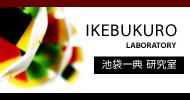Team:Tokyo-NoKoGen/Project/lux operon
From 2012.igem.org
- overview
- lux operon
- rhodopsin
- modelling
- Future work
- project
Introduction
What is bioluminescence ? Bioluminescence is visible light emission in living organisms mediated by an enzyme catalyst. The bioluminescence has been observed in many different organisms including bacteria, fungi, fish, insects, algae, and squid.
lux system Lux operon codes for bacterial luciferase subunit (luxAB) and the fatty acid reductase polypeptide (luxCDE) that is responsible for the biosynthesis of the aldehyde substrate for luminescent reaction.
The luxA and luxB gene code for α and β subunit of luciferase. Bacterial luciferase catalyzes the oxidation of reduced flavin mononucleotide (FMNH2) and long-chain fatty aldehyde resulting in the emission of a blue-green light.
FMNH2 +O2 → FMN + RCOOH + H2O + light
The luxCDE genes are required for conversion of fatty acid into long chain aldehyde.
luxC : reductase
luxD : transferase
luxE : synthase
/! fig !/ the luxG gene which codes for flavin reductase is very closely linked to the luxE gene
advantage of lux system
Adding substrate is NOT necessary
Light emission occurs AUTOMATICALLY
Objective
1. Cloning lux operon from Photobacterium phosphoreum
Why we chose lux gene from Photobacterium phosphoreum? P. phosphoreum (NCMB844) is known that the luminescence intensity is brightest of other strains. (1 But maximum luminescence levels require lower temperatures (20°C) than the other luminescent species, because this species in the deeper waters of the ocean. (1
Method Construction of biobrick Original lux gene from P. phosphoreum has three biobrick restriction sites.
In order to remove restriction site, we chose overlap extension PCR method and designed four primer set.
Lux gene fragment was amplified and four PCR products were connected.
First, we constructed arabinose inducible lux gene biobrick.
Evaluation method
Result 2. Improvement of lux luminescence
We succeeded in constructing arabinose inducible lux gene biobric, so we
What is LumP and YFP ?
Bacterial luciferase derived from Vibrio fischeri, which is a strain of luminous bacteria, shows brue-green light emission (wavelength is 495 nm).
However, Vibrio fischeri strain Y-1 emits longer wavelength light than normal Vibrio fischeri (535 nm, yellow)(a). The yellow shift of light emission wavelength is caused by YFP, which is a secondary emitter protein. YFP does not emit light itself, but it interacts with the luciferase, resulting in a shift of wavelength of light emission. YFP has FMN as a chromophore, and its size is about 28 kDa.
Furthermore, in luminous bacteria, there are strains that emit light with shorter wavelength than normal Vibrio fischeri (475nm,blue), such as Photobacterium phosphoreum, Photobacterium kishitanii and Photobacterium leiognathi.
It is known that blue shift of these luminous bacterium is caused by lumazine protein (LumP). Similar to YFP, LumP shifts the wavelength by interacting with the luciferase. As a chromophore, it has 6,7-dimethyl-8-(1'-D-ribityl)lumazine (DMRL), and its size is about 21kDa.
Learning from previous reports, we decided to use these proteins for changing the color.
Reference
a)Daubner SC, Astorga AM, Leisman GB, Baldwin TO., 1987, Proc Natl Acad Sci U S A.
Yellow light emission of Vibrio fischeri strain Y-1: purification and characterization of the energy-accepting yellow fluorescent protein.
Method
Construction of biobrick
Evaluation method
Result
Rib operon
P. phosphoreum has rib operon(ribEBHA) downstream of luxG. Their gene productshave been identified as riboflavin synthase(RibE), DHBP synthase(RibB), lumazine synthase(RibH) and GTP cyclohydrolaseII(ribA).
Riboflavin is the key substrate for lux operon because riboflavin is the precursor of riboflavin 5'- monophosphate (FMN). FMNH2 is the substrate for emitting light. Synthesis of riboflavin is important to enhance the luminescent. Instead of rib operon from P. phosphoreum, we cloned the rib genes from E. coli BL21(DE3) and constructed rib operon biobrick.
Method
Construction of biobrick
Result
What is bioluminescence ? Bioluminescence is visible light emission in living organisms mediated by an enzyme catalyst. The bioluminescence has been observed in many different organisms including bacteria, fungi, fish, insects, algae, and squid.
lux system Lux operon codes for bacterial luciferase subunit (luxAB) and the fatty acid reductase polypeptide (luxCDE) that is responsible for the biosynthesis of the aldehyde substrate for luminescent reaction.
The luxA and luxB gene code for α and β subunit of luciferase. Bacterial luciferase catalyzes the oxidation of reduced flavin mononucleotide (FMNH2) and long-chain fatty aldehyde resulting in the emission of a blue-green light.
FMNH2 +O2 → FMN + RCOOH + H2O + light
The luxCDE genes are required for conversion of fatty acid into long chain aldehyde.
luxC : reductase
luxD : transferase
luxE : synthase
/! fig !/ the luxG gene which codes for flavin reductase is very closely linked to the luxE gene
advantage of lux system
Adding substrate is NOT necessary
Light emission occurs AUTOMATICALLY
Objective
1. Cloning lux operon from Photobacterium phosphoreum
Why we chose lux gene from Photobacterium phosphoreum? P. phosphoreum (NCMB844) is known that the luminescence intensity is brightest of other strains. (1 But maximum luminescence levels require lower temperatures (20°C) than the other luminescent species, because this species in the deeper waters of the ocean. (1
Method Construction of biobrick Original lux gene from P. phosphoreum has three biobrick restriction sites.
In order to remove restriction site, we chose overlap extension PCR method and designed four primer set.
Lux gene fragment was amplified and four PCR products were connected.
First, we constructed arabinose inducible lux gene biobrick.
Evaluation method
Result 2. Improvement of lux luminescence
We succeeded in constructing arabinose inducible lux gene biobric, so we
What is LumP and YFP ?
Bacterial luciferase derived from Vibrio fischeri, which is a strain of luminous bacteria, shows brue-green light emission (wavelength is 495 nm).
However, Vibrio fischeri strain Y-1 emits longer wavelength light than normal Vibrio fischeri (535 nm, yellow)(a). The yellow shift of light emission wavelength is caused by YFP, which is a secondary emitter protein. YFP does not emit light itself, but it interacts with the luciferase, resulting in a shift of wavelength of light emission. YFP has FMN as a chromophore, and its size is about 28 kDa.
Furthermore, in luminous bacteria, there are strains that emit light with shorter wavelength than normal Vibrio fischeri (475nm,blue), such as Photobacterium phosphoreum, Photobacterium kishitanii and Photobacterium leiognathi.
It is known that blue shift of these luminous bacterium is caused by lumazine protein (LumP). Similar to YFP, LumP shifts the wavelength by interacting with the luciferase. As a chromophore, it has 6,7-dimethyl-8-(1'-D-ribityl)lumazine (DMRL), and its size is about 21kDa.
Learning from previous reports, we decided to use these proteins for changing the color.
Reference
a)Daubner SC, Astorga AM, Leisman GB, Baldwin TO., 1987, Proc Natl Acad Sci U S A.
Yellow light emission of Vibrio fischeri strain Y-1: purification and characterization of the energy-accepting yellow fluorescent protein.
Method
Construction of biobrick
Evaluation method
Result
Rib operon
P. phosphoreum has rib operon(ribEBHA) downstream of luxG. Their gene productshave been identified as riboflavin synthase(RibE), DHBP synthase(RibB), lumazine synthase(RibH) and GTP cyclohydrolaseII(ribA).
Riboflavin is the key substrate for lux operon because riboflavin is the precursor of riboflavin 5'- monophosphate (FMN). FMNH2 is the substrate for emitting light. Synthesis of riboflavin is important to enhance the luminescent. Instead of rib operon from P. phosphoreum, we cloned the rib genes from E. coli BL21(DE3) and constructed rib operon biobrick.
Method
Construction of biobrick
Result
 "
"





